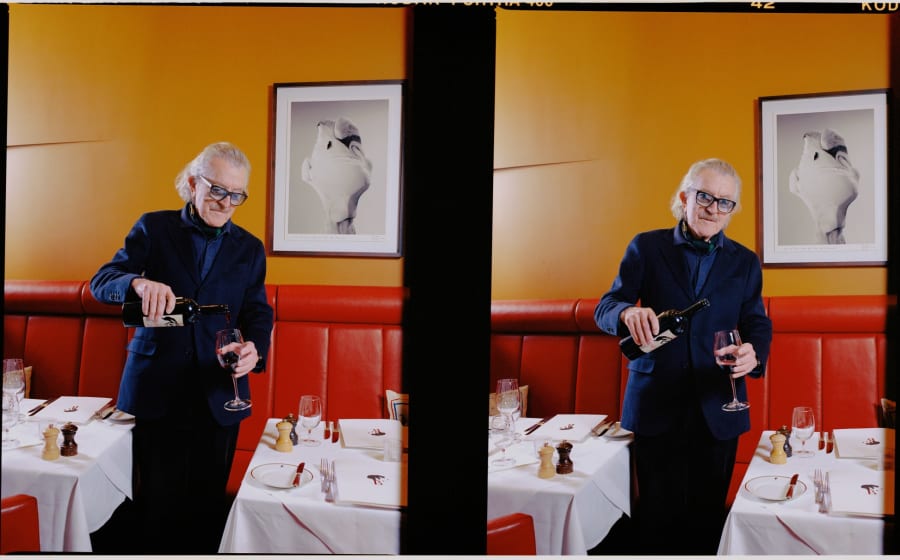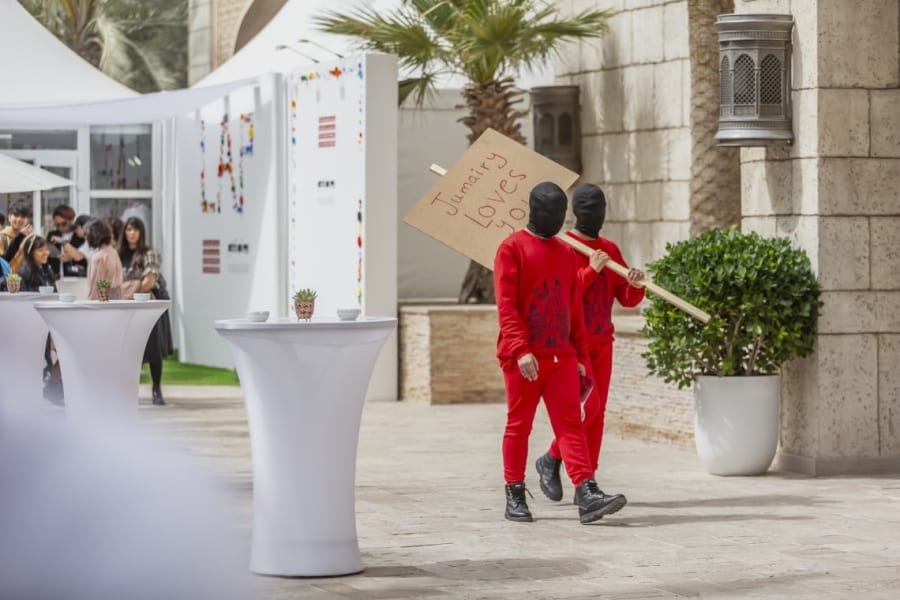What does the name ‘Busan’ evoke for you?
Busan is a dynamic, hybrid city with endless potential! It’s a place shaped by its unique geography and history, embodying the warmth of Korean jeong and the vibrant spirit of heung.
I think of the many lives touched by the Korean War – those who sought refuge here, those who stayed to build new lives, and the original residents. Their collective experiences have woven a rich tapestry that’s hard to fully grasp today.
While Busan’s economic growth has been remarkable, I see its art scene just beginning to garner attention from the international audience. Much like how Korea’s art market flourished rapidly with international influence, I believe in Busan’s potential for cultural growth. I’m confident that art will soon stand alongside the city’s natural beauty as a source of inspiration for its people.
Your first memory of Busan?
My first memory of Busan takes me back to about 20 years ago. I can still vividly recall the warm sunlight on Gwangalli Beach and the bright, innocent laughter of my young son as he played in the sand.
We knew no one in Busan then, but I was utterly captivated by the sea and the gentle sunshine. It was in that moment I decided to make Busan our home. Looking back, it was an illuminating decision – one I’ve never regretted for a single moment.
Where do you feel most at home?
At night, I usually find myself at home in my room – a space reminiscent of a wunderkammer, densely hung with artworks. Lying there alone with a glass of wine, I feel a sensation reminiscent of A Midsummer Night’s Dream.
From there, I gaze out at the illuminated city streets through windows that reflect an intriguing mix of art: Hito Steyerl’s captivating Power Plants video; Choi Daejin’s ink paintings with their flowing, muscular forms; and Mire Lee’s Dreamcatchers installation – an artwork both unsettling and mesmerizing in its beauty. In these moments, the boundary between reality and the imaginary world starts to blur. I find myself constantly trying to balance on the edge between the two.
What is the mark of a true Busan local?
A true Busan local knows that during the Busan International Film Festival season, you might find yourself sitting next to a movie star at a pojangmacha (street food cart) near Haeundae Beach. They’re also familiar with the sight of young people singing boisterously late into the night in downtown Seomyeon.
In the early morning, you’ll spot Busan locals taking barefoot walks on Dongbaek Island and along Haeundae Beach. And don’t be surprised to see dogs comfortably seated in strollers – that’s just another part of the Busan charm.
Which landmark best embodies Busan?
Yeongdo Bridge truly embodies the spirit of Busan. This drawbridge connects Yeongdo, one of the southernmost islands of Busan, to the mainland. During the Korean War, when Busan served as the temporary capital, Yeongdo Bridge became a poignant meeting place for separated families.
Near the bridge, you’ll find Kangkangee Arts Village. The name ‘Kangkangee’ comes from the sound of hammers striking ships during repairs. This area flourished with the shipbuilding industry during Korea’s industrialization. Today, it’s transformed into a vibrant spot, filled with trendy cafes and cultural facilities, attracting many tourists. Visiting this area always stirs mixed emotions. The sight of aging, massive ships and abandoned factories feels like a graveyard of modernization. It’s as if we’re living as tenants in a world overtaken by machines.
Your favorite place for breakfast?
I have a signature breakfast spot that I always introduce to visitors in Busan. It’s a place I never fail to take them. Near Busan, there’s a coastal area called Ilgwang. On the beach there, you’ll find a restaurant specializing in Gijang anchovy ssambap. They serve fresh anchovies, each one carefully prepared, then fried with a gochujang sauce. You wrap these in perilla or kelp leaves before eating. It’s a fail-proof dish! Not once has it disappointed. Whether it’s friends from Seoul or international visitors, everyone who tries it is amazed and delighted.
Where are the best places to shop?
Back when my child was little, we frequently visited the markets. My friends and I would go to Gukje Market to buy fishcakes and children’s clothes. We’d also visit Jagalchi Market to purchase fish and seafood, and to people-watch. These days, I enjoy watching films at the Busan Cinema Center, where the film festival is held, or visiting Busan’s famous cafes. There are quite a few stunning cafe buildings with beautiful ocean views.
In the height of summer or dead of winter, I’m grateful for the world’s largest department store right here in Busan. It even has a well-equipped jjimjilbang (Korean spa), so you can easily spend an entire day there.
Who would be on the guest list for your dream dinner party in Busan?
My dream guest list would include the old masters who either sought refuge in Busan during the Korean War or were born here.
I’m thinking of artists like Kim Whanki, Lee Jung-seob, Park Soo-keun, Moon Shin, Chang Ucchin, and Chun Kyung-ja, among others.
I believe that today’s Korean contemporary art scene exists because of these artists who kept their creative spirit alive even during the war.
Although they have all passed away, I’d love to invite them to discuss the state of Korean art scene. After all, in dreams anything is possible.
Where do you go out in Busan?
There’s a beautifully constructed long walking path that follows the coastline. As you stroll along, enjoying the refreshing sea breeze, you’ll continuously encounter restaurants using a wide variety of fresh ingredients, as well as cherry blossom trees.
Which artwork best represents Busan?
There’s a remarkable body of work by photographer Choi Min-shik, who was born in 1928 and consistently documented the people of Busan from 1957 until just before his passing in 2012. His collection comprises around 150,000 pieces.
While Busan is now a peaceful and prosperous city, it’s a place built on the sacrifices and sweat of many people. Choi Min-shik’s photographs, which candidly capture the lives of ordinary people through rapidly changing times, are, in my opinion, both a great historical record and a work of art.
Then there’s Choi Daejin, an artist who interprets our current society through personal histories. Although he spent his school years in Busan, he lived in France and Seoul before learning about his family history in Busan. He views and interprets Busan from the perspective of an outsider. This is evident in the mural he painted in my home and in his work for this year’s Busan Biennale.
These two artists record our past and present.
What is the craziest thing you’ve ever heard or seen on the streets of Busan?
They say when driving in Busan, you should turn on your right blinker and then go left. It’s a bit of a wild ride out there! In fact, if you can handle driving in Busan, you can drive anywhere in Korea.
What can you only do in Busan?
In Busan, you can experience the mountain, sea, and river all in one morning.
For lunch, you can feast at a seafood market, and in the afternoon, you can sip Starbucks coffee on the 99th floor while watching a beautiful sunset over the ocean.
What do you miss most about Busan when you are away?
I mainly divide my time between Seoul and Busan. Both cities are incredibly lovable, but when I want to escape Seoul’s traffic and urban bustle to enjoy nature’s tranquility, I find myself in Busan before I know it. The peaceful sea breeze and gentle sunshine that you can feel in May and October remind me that I’m alive. Yet, I’m occasionally reminded of the sublime power of nature, like when a typhoon tore Lee Mire’s work to shreds at the past Busan Biennale. In moments like these, I can’t help but bow my head in awe of nature’s might.
Your best advice for those just visiting?
Embrace Busan’s hybrid nature, its serendipity, and its beautiful chaos!
In Busan, you can enjoy any wild adventure with the person next to you. Even if you might find yourself on the local news the next day.
Caption for top-image: Busan by night. Photograph by Dongkeun Lee.
Published on August 16, 2024.


